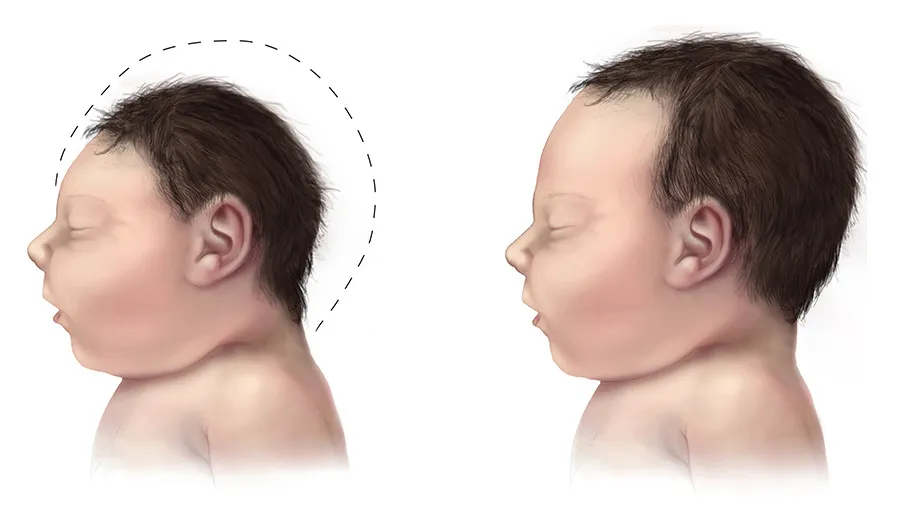Why the Flu Is More Than Just a Cold for Kids
When we think of the flu, many of us picture a few days of fever, chills, and rest. But for children—especially babies, toddlers, and those with underlying health conditions—influenza can be far more dangerous. Each year, children account for a significant portion of flu-related hospitalizations and, tragically, deaths.

In fact, during the 2019–2020 flu season, the CDC reported 199 flu- or influenza-related deaths in children, though statistical modeling suggests the actual number may have been closer to 434.
This blog post is your go-to guide for understanding pediatric influenza: what it is, how it spreads, why it’s particularly risky for kids, and—most importantly—how to protect your child during flu season.
What Is Influenza?
Influenza, commonly referred to as the flu, is a highly contagious viral infection that primarily targets the respiratory system, including the nose, throat, and lungs. Unlike a common cold, which develops gradually, the flu or influenza often hits suddenly and can make children feel very sick, very fast.
How It Spreads
Influenza (the flu) spreads mainly through respiratory droplets and contact with contaminated surfaces. Here’s how it works:
1. Droplet Transmission
When someone with the flu coughs, sneezes, or talks, tiny droplets containing the virus are released into the air. These droplets can:
- Land in the mouth, nose, or eyes of people nearby.
- Be inhaled directly into the lungs.

Children, especially in crowded places like schools or daycare centers, are more likely to spread and catch the flu this way. They’re especially good at spreading germs because they often forget to cover their mouths or wash their hands.
2. Surface (Contact) Transmission
Flu viruses can survive on high-contact surfaces like toys, tables, doorknobs, phones, and remote controls. If a child touches a surface with the virus and then touches their face, mouth, or nose, the virus can enter their body and cause infection.
3. Flu Season and Higher Risk Periods
Flu spreads more easily during fall and winter when people are indoors more often, and air circulation is limited. Dry indoor air may also help viruses stay in the air longer.
4. Asymptomatic Spread
People infected with the flu can spread the virus a day before they show symptoms, and up to 5-7 days after getting sick. Young children and people with weakened immune systems may spread it for even longer.
How to Reduce the Spread:
- Get vaccinated every year.
- Wash hands often with soap and water.
- Cover coughs and sneezes with a tissue or elbow.
- Disinfect surfaces regularly.
- Keep sick children at home until they are fever-free for at least 24 hours without medication.
Understanding how influenza spreads is key to stopping it—especially for protecting our youngest and most vulnerable children.
When Is Flu Season?
In the Philippines and many other countries, flu season typically peaks during the cooler months—usually from November through February. However, cases can occur year-round, especially in tropical climates.
Why the Flu Is a Serious Concern for Children
While most healthy adults recover from the flu within a week or so, children—particularly those under 5 years old—are at higher risk for severe complications. According to the CDC, children under 5, and especially those under 2, are more likely to be hospitalized due to flu-related complications.
Potential Complications Include:
- Pneumonia: A serious lung infection that can be life-threatening.
- Bronchitis: Inflammation of the airways, causing persistent coughing.
- Sinus and Ear Infections: Common in younger children.
- Worsening of Chronic Conditions: Such as asthma or heart disease.
- Hospitalization: In severe cases, children may require intensive care.
In rare but tragic instances, the flu can be fatal. For example, in 2025, New York experienced a record number of pediatric flu deaths, with health officials reporting the loss of 25 children—the highest ever recorded in the state.
Recognizing Flu Symptoms in Children
Flu symptoms in kids can mimic those of a common cold but tend to come on more suddenly and are more severe. Being able to spot these signs early can make a big difference in your child’s recovery.
Common Symptoms:
- High Fever: Often sudden and can reach up to 104°F (40°C).
- Cough: Usually dry and persistent.
- Sore Throat: May cause difficulty swallowing.
- Runny or Stuffy Nose: Common in both colds and flu.
- Body Aches and Muscle Pain: Can be severe, making it hard for kids to move.
- Headache: Often accompanies other symptoms.
- Fatigue: Extreme tiredness and lack of energy.
- Vomiting and Diarrhea: More common in children than adults.
Flu symptoms tend to appear abruptly and are more intense than those of a cold.
When to Seek Medical Attention: Urgent Signs
While many children recover from the flu at home, certain symptoms require immediate medical attention. According to Children’s Health, you should take your child to the emergency room if they experience any of the following:
Emergency Warning Signs:
- Difficulty Breathing or Shortness of Breath: Including rapid breathing or ribs pulling in with each breath.
- Bluish Lips or Face: Indicates a lack of oxygen.
- Dehydration: Fewer wet diapers, no tears when crying, sunken eyes, or dry mouth.
- Severe Muscle Pain: Child refuses to move or walk.
- High Fever Not Responding to Medication: Especially if above 104°F (40°C).
- Lethargy or Unresponsiveness: Child is difficult to wake or not interacting.
- Symptoms That Improve Then Return: Fever and cough that come back worse.
- Any Fever in an Infant Under 3 Months: Requires immediate evaluation.
If you’re ever in doubt, it’s better to err on the side of caution and consult your pediatrician or visit the nearest emergency department.
Diagnosis and Treatment
How Is the Flu Diagnosed?
Pediatricians typically diagnose the flu based on symptoms and a physical examination. In some cases, especially if early treatment is being considered, a rapid flu test may be performed using a nasal or throat swab.
Treatment Options
Antiviral Medications
Antiviral drugs like oseltamivir (Tamiflu) can be prescribed for children, especially those at high risk or with severe illness. These medications work best when started within 48 hours of symptom onset and can reduce the duration and severity of symptoms.
Supportive Care
- Hydration: Encourage your child to drink plenty of fluids.
- Fever and Pain Management: Use acetaminophen or ibuprofen as directed by your pediatrician.
- Rest: Ensure your child gets ample rest to help their body fight the virus.
- Avoid Aspirin: Never give aspirin to children, as it can lead to Reye’s syndrome, a rare but serious condition.
Most children recover within a week, but it’s essential to monitor for any worsening symptoms.
Prevention: The Flu Vaccine
The most effective way to protect your child from the flu is through annual vaccination. The CDC recommends that everyone aged 6 months and older receive a flu vaccine each year.
Benefits of the Flu Vaccine
- Reduces Risk of Illness: Lowers the chance of getting the flu.
- Prevents Severe Outcomes: Decreases the likelihood of hospitalization and death.
- Protects Vulnerable Populations: Helps safeguard infants under 6 months who are too young to be vaccinated.
Vaccine Options
- Flu Shot: An injection suitable for most people.
- Nasal Spray Vaccine: A needle-free option for healthy children over 2 years old.
Importance of Vaccinating Caregivers
Vaccinating parents, siblings, and caregivers creates a protective “cocoon” around infants and others who are at high risk but cannot be vaccinated themselves.
Other Prevention Measures
In addition to vaccination, adopting good hygiene practices can further reduce the risk of flu transmission.
Hand Hygiene
- Regular Handwashing: Teach children to wash their hands with soap and water for at least 20 seconds.
- Use Hand Sanitizer: When soap and water aren’t available, use an alcohol-based hand sanitizer.
Avoid Close Contact
- Stay Away from Sick Individuals: Keep your child away from people who are ill.
- Stay Home When Sick: If your child is unwell, keep them home to prevent spreading the virus.
Clean and Disinfect
- Regular Cleaning: Disinfect frequently touched surfaces like toys, doorknobs, and electronic devices.
These simple steps, combined with vaccination, can significantly reduce the spread of influenza.
Protect Our Children from Influenza
Influenza is more than just a seasonal nuisance—it’s a serious health risk, particularly for children.
While most people recover from the flu within a few days to a week, children— especially infants, toddlers, and those with chronic health conditions—are much more vulnerable to severe complications like pneumonia, ear infections, asthma flare-ups, and even hospitalization or death. The good news?
We have the tools to protect them.
The Power of Prevention
The annual flu vaccine remains the most effective way to guard against influenza. It’s safe, widely available, and recommended for everyone aged 6 months and older. Vaccinating your child not only protects them but also helps protect those around them, including family members and classmates.
This is especially crucial for infants under 6 months who are too young to be vaccinated and rely on the immunity of those around them. Simple daily habits—like washing hands, disinfecting surfaces, covering coughs, and keeping sick kids at home—also go a long way in stopping the virus from spreading.
When combined with the flu vaccine, these practices help create a strong shield of protection around our children and communities.
Know When to Act
Being able to recognize the signs of flu early—such as high fever, sudden fatigue, or a persistent cough—can make a big difference in how quickly your child recovers.
If symptoms are severe or your child is in a high-risk group, don’t wait: consult your pediatrician or head to the emergency room if urgent signs appear, like difficulty breathing or unresponsiveness. For guidance tailored to your child’s health, talk to your pediatrician.
If you’re in the Atlanta area, check out Omega Pediatrics’ flu-related care options and see how they can help your family stay protected during flu season.

Take Action Today
So what can you do right now?
- Schedule your child’s flu vaccine—the earlier in the season, the better.
- Get vaccinated yourself to prevent spreading the flu at home.
- Teach your children healthy hygiene habits that they’ll carry for life.
- Bookmark this blog or share it with friends and family who may benefit.
Remember, your actions today can prevent suffering tomorrow. Protect your kids. Protect your family. Beat the flu this season—before it beats you.
For more helpful parenting and pediatric tips, visit Omega Pediatrics’ blog and stay one step ahead of every season.



